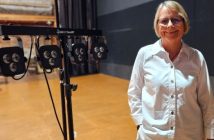Sport Waikato has launched an ambitious goal to have 75 percent of the community physically active, significantly higher than the current 54 percent.
The transformational target comes at the end of an 11 month review and sees the charitable trust
aiming to change the way it works in order to influence system change, chief executive Matthew Cooper says.
He is now involved in a consultation process with staff, about half of whom are likely to lose their jobs under the leaner model envisaged.

Matthew Cooper
Cooper says while Sport Waikato is very good at delivering on diverse contracts, the outcomes are not necessarily unified, and he wants to see a more focused organisation driving change.
“We haven’t been immune to Covid because our funders haven’t been immune, but this is certainly not Covid-driven. My proposal is around us having more impact, having a clearly defined purpose and strategy,” he says.
He says Waikato has about 1500 deliverers of sport and recreation.
“So Sport Waikato doesn’t need to be also doing delivery. We need to be that real system influencer at a high level.”
Cooper stresses that the change is not a reflection on the staff, who number about 70. “This is not a reflection on our people because our people have done a great job and are doing a great job.
“It’s just a case of us being really focused about: what is our role going forward?”
Sport Waikato is currently four years through its innovative Moving Waikato 2025 programme, and while it intends to retain that collaborative model, Cooper says they were not satisfied with their targets.
“We’re not convinced that we’re really shifting the dial in terms of the amount of people physically active in the Waikato region.”
The organisation has surveyed 600 adults and 180 youth in each of its nine districts and its metro area, giving it robust data, Cooper says.
“We kept looking at that data and said, are we happy with 54 percent of Waikato adults meeting the guidelines knowing that back in 2007 it was 54 percent? It dipped in 2014 to 46 percent. And we’ve just clawed back to basically 2007.”
The 75 percent figure came from them questioning their goals.
“If we were going to stretch ourselves, what would that look like knowing that we’ve always been centred around the 50 percent mark?
“I’m saying that we actually need a more lofty goal, we really want to ramp it up.”
Cooper says they are getting good data from Sport New Zealand, which is revealing issues around Māori participation, as well as girls and women, and those aged 18 and younger.
Just 54 percent of secondary school students in the region play organised sport, which he says has been the traditional measure of activity for the age group.
“The traditional model of organised structured sport needs to be challenged. We need to start thinking about innovation,” he says.
“So the focus now is the three parts of movement: they are play, which is incidental activity, active recreation, and organised sport.
Among the headwinds, Sport Waikato is confronting the age of the device, including smartphones, and plans to turn that to its advantage with a beefed-up presence on social media, including Facebook and Instagram as well as Linked-In.
“We’re trying to be innovative. We’re certainly trying to be sustainable. We always want to be collaborative, but we want to make sure we’re reaching those decision makers so that we can try and truly effect system change in sport and recreation in the Waikato region.”
It is likely to be four or five months before changes are visible, following an initial three-week
period of consultation and feedback.
“My major focus now is to listen to what I know will be very good feedback and to look after people,” he says.
“I don’t think transformation can just be clicked in. I think transformation takes a while.”





